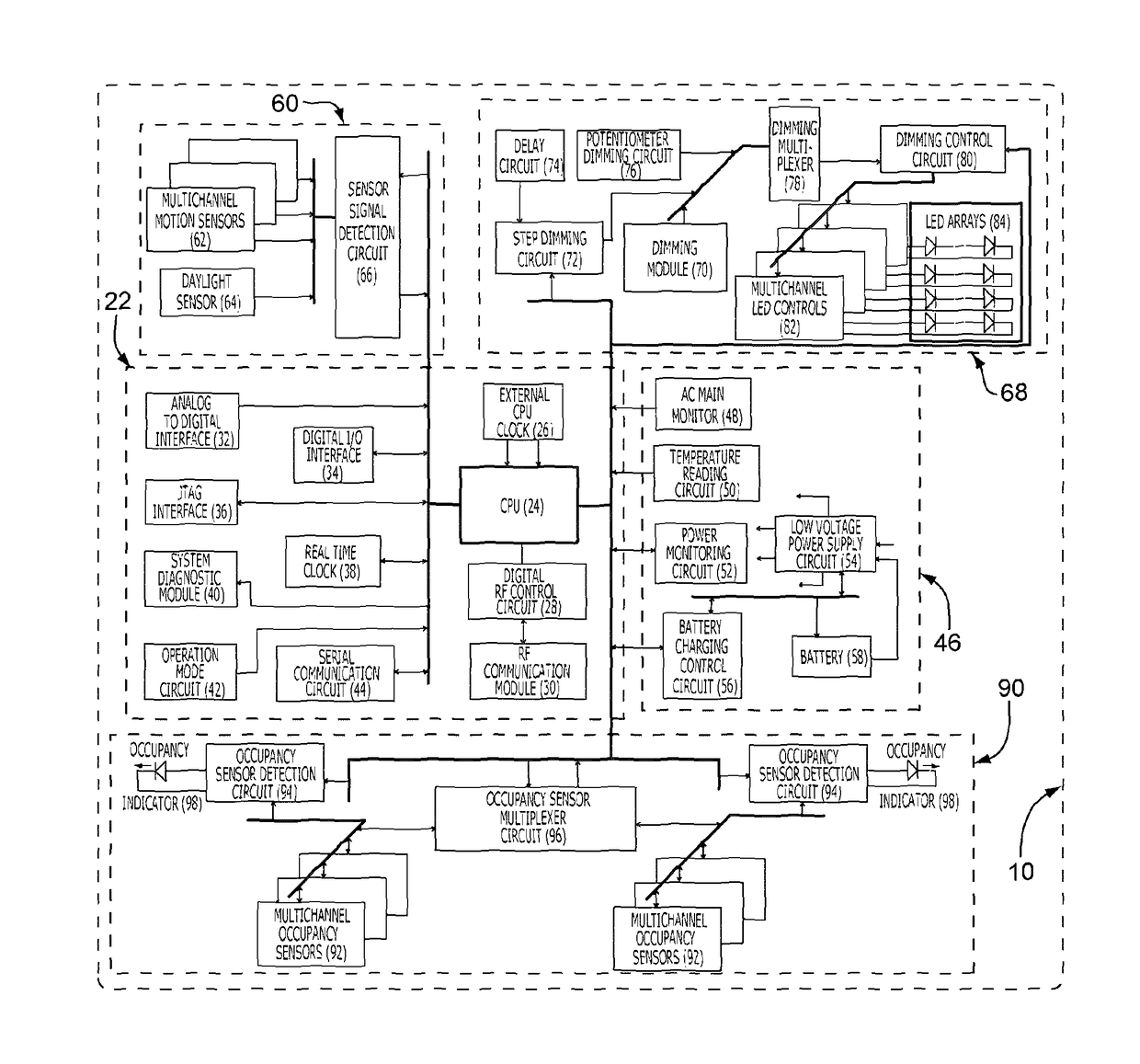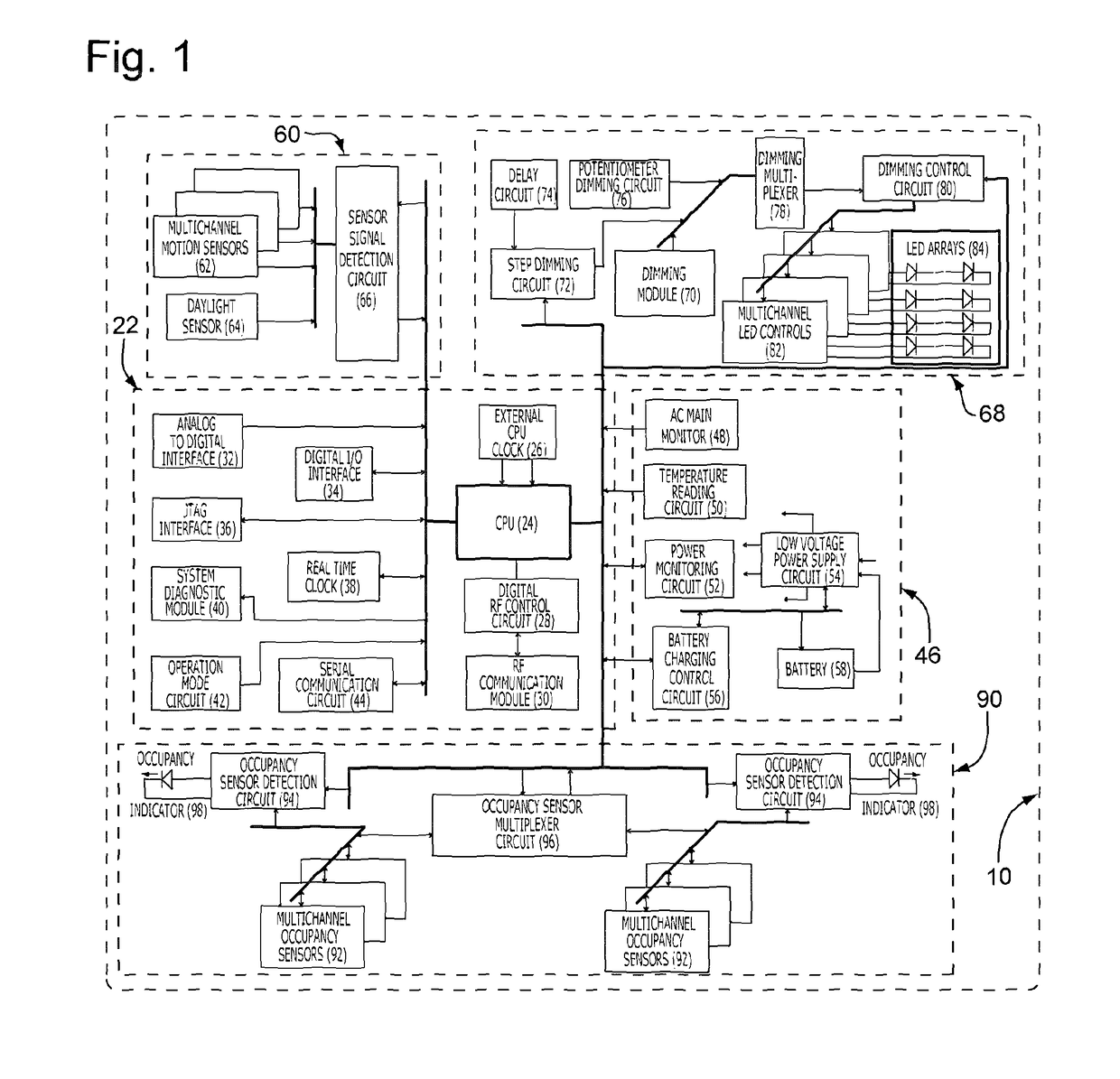Wireless lighting and electrical device control system
a control system and electrical device technology, applied in the field of intelligent lighting control systems, can solve the problems of limiting the functionality and versatility of said systems, limiting the number of channels available for sensors and diagnostics and power management, and unable to incorporate sensory input from items not related to lighting, so as to improve system integration and component reliability, save power, and increase security
- Summary
- Abstract
- Description
- Claims
- Application Information
AI Technical Summary
Benefits of technology
Problems solved by technology
Method used
Image
Examples
Embodiment Construction
[0050]All relevant elements of the Wireless Lighting and Other Electrical Device Control System will now be introduced by reference to appended figures, and then how each element functions and interacts with each other element will be described herein.
[0051]FIG. 1 is a representative block diagram illustrating interconnected sections of the Wireless Lighting and Electrical Device Control System 10 relating to control & networking 22, power management 46, motion / daylight sensing 60, dimming functions 68, and occupancy sensing 90. Elements of each section will now be listed and briefly described separately herein.
Control & Networking:
[0052]The core of control & networking 22 is the CPU 24, a programmable computer IC specifically designed to perform all lighting control and networking functions onboard each independent lighting fixture (12 or 14, see FIGS. 2a &3c). The CPU 24 requires an external CPU clock 26 for cycle timing and an accurately set real time clock 38 for record keeping....
PUM
 Login to View More
Login to View More Abstract
Description
Claims
Application Information
 Login to View More
Login to View More - R&D
- Intellectual Property
- Life Sciences
- Materials
- Tech Scout
- Unparalleled Data Quality
- Higher Quality Content
- 60% Fewer Hallucinations
Browse by: Latest US Patents, China's latest patents, Technical Efficacy Thesaurus, Application Domain, Technology Topic, Popular Technical Reports.
© 2025 PatSnap. All rights reserved.Legal|Privacy policy|Modern Slavery Act Transparency Statement|Sitemap|About US| Contact US: help@patsnap.com



